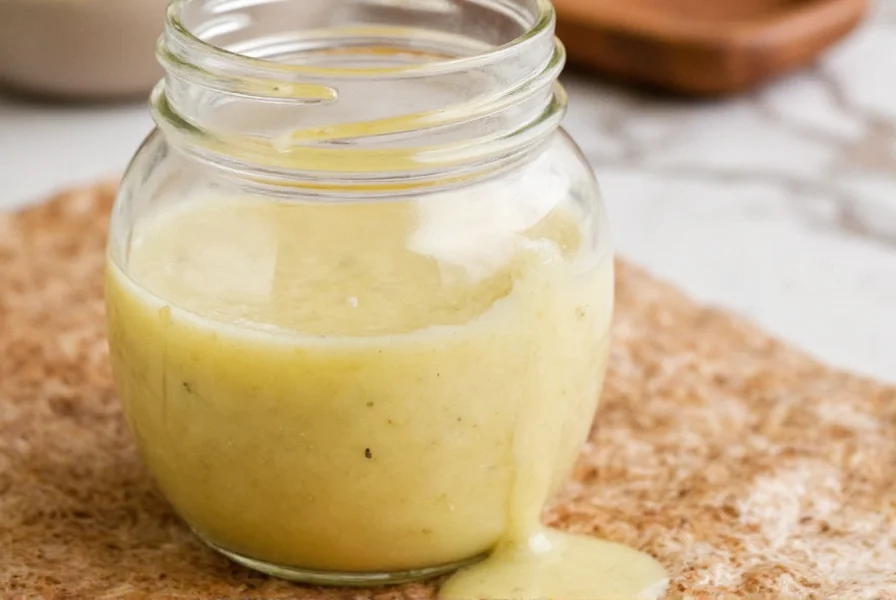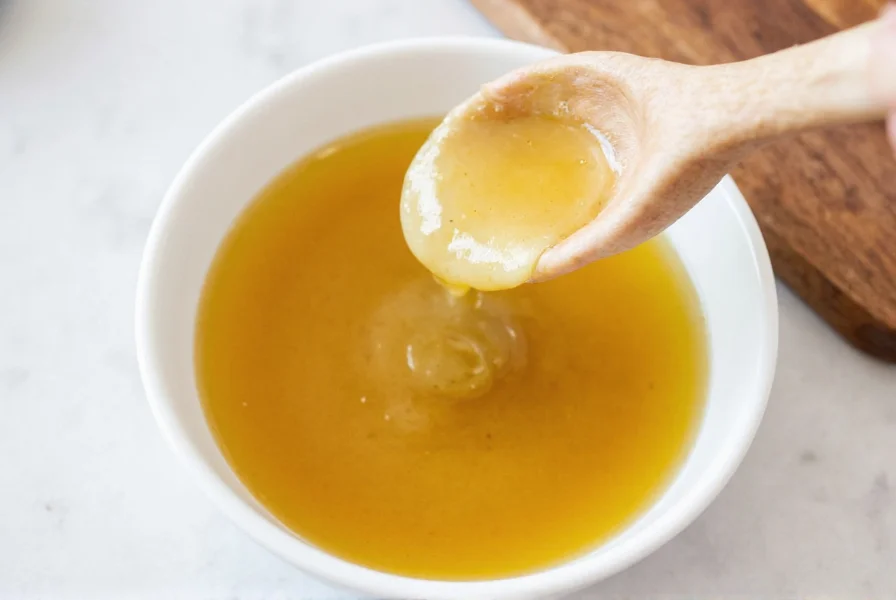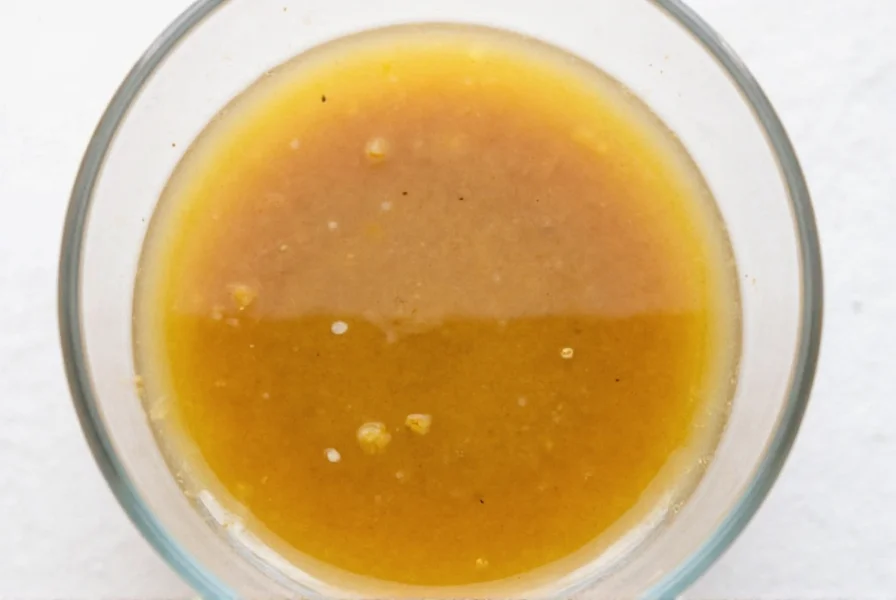Ginger miso dressing has become a staple in modern Japanese and fusion cuisine for good reason. This versatile condiment delivers a perfect balance of umami, sweetness, and tang that elevates everything from simple green salads to grilled proteins. Unlike store-bought versions that often contain unnecessary additives, homemade ginger miso dressing lets you control ingredients while preserving authentic flavor profiles.
The Essential Components of Authentic Ginger Miso Dressing
Creating exceptional ginger miso dressing requires understanding each ingredient's role. The magic happens through the synergy of these core components:
| Ingredient | Function | Authentic Ratio |
|---|---|---|
| White miso paste | Provides umami foundation and creamy texture | 3 parts |
| Fresh grated ginger | Delivers bright, spicy notes and aromatic complexity | 1 part |
| Rice vinegar | Offers gentle acidity without overpowering flavors | 2 parts |
| Toasted sesame oil | Contributes nutty depth and emulsifying properties | 1 part |
| Neutral oil (grapeseed/avocado) | Creates proper consistency and balances intensity | 4 parts |
Professional chefs emphasize using unpasteurized miso for homemade ginger miso dressing recipes, as pasteurization diminishes enzymatic complexity. The ginger should be freshly grated rather than powdered to preserve volatile aromatic compounds that give this dressing its distinctive character.
Step-by-Step Preparation Guide
Follow these precise steps for restaurant-quality ginger miso dressing every time:
- Combine 3 tablespoons white miso paste and 2 tablespoons rice vinegar in a glass bowl
- Whisk vigorously until miso fully dissolves into smooth emulsion
- Add 1 tablespoon freshly grated ginger and 1 teaspoon toasted sesame oil
- Slowly drizzle in 4 tablespoons neutral oil while continuously whisking
- Adjust consistency with water (1 teaspoon at a time) if too thick
- Taste and balance with additional vinegar for acidity or honey for sweetness
- Transfer to airtight container and refrigerate for 2 hours before use

Perfect Pairings for Ginger Miso Dressing
This dressing's versatility makes it suitable for numerous applications beyond basic salads. Consider these professional pairing recommendations:
- Salad applications: Works exceptionally with bitter greens like radicchio and endive, where its sweetness balances bitterness
- Protein enhancement: Marinate salmon or chicken for 30 minutes before cooking for subtle umami infusion
- Rice bowl component: Drizzle over grain bowls containing roasted vegetables and tofu
- Dipping sauce: Thin with additional rice vinegar for sushi or vegetable dipping
- Soup finish: Stir a tablespoon into miso soup just before serving for flavor layering
Storage Guidelines and Shelf Life
Proper storage maintains both safety and flavor integrity of your ginger miso dressing. Follow these evidence-based recommendations:
- Store in airtight glass container in refrigerator
- Consume within 7 days for optimal flavor (miso preserves but ginger degrades)
- Do not freeze as this alters texture and flavor compounds
- Always use clean utensils to prevent bacterial contamination
- Discard if separation becomes permanent or odor changes
Variations for Dietary Preferences
Adapt this basic ginger miso dressing recipe to accommodate various dietary needs while maintaining authentic flavor:
- Vegan version: Ensure miso paste contains no fish derivatives (check label)
- Low-sodium option: Use reduced-sodium miso and increase rice vinegar proportionally
- Extra-ginger variation: Double ginger quantity and add 1/4 teaspoon lemon zest
- Creamy alternative: Blend with 1 tablespoon silken tofu for thicker texture
- Sweetness adjustment: Replace potential honey with date syrup for vegan option
Troubleshooting Common Issues
Even experienced cooks encounter challenges with ginger miso dressing preparation. Here's how to address frequent problems:
- Too salty: Balance with additional rice vinegar and a touch of sweetener (1/4 teaspoon at a time)
- Too thick: Whisk in cold water, 1 teaspoon increments, until desired consistency
- Separation: Proper emulsification requires slow oil incorporation while whisking constantly
- Bland flavor: Increase ginger quantity or let dressing rest 24 hours for flavor development
- Overpowering ginger: Add additional miso paste to rebalance flavor profile
Why Homemade Outperforms Store-Bought
Commercial ginger miso dressings often contain unnecessary additives that compromise both flavor and nutritional value. Most store versions include:
- Excessive sugar (up to 5g per serving)
- Artificial preservatives like potassium sorbate
- Stabilizers such as xanthan gum
- Pasteurized miso with diminished enzymatic activity
- Lower quality oils that create off-flavors
Creating your own ginger miso dressing with fresh ingredients ensures maximum flavor complexity and avoids unnecessary additives. The process takes just 10 minutes yet delivers significantly superior results compared to even premium store-bought options.

Frequently Asked Questions
Can I substitute red miso for white miso in ginger miso dressing?
Yes, but with flavor adjustments. Red miso has stronger, saltier flavor than white miso. When substituting, use 25% less red miso and increase rice vinegar by 25% to balance intensity. The resulting dressing will have deeper umami notes but less delicate flavor profile.
How long does homemade ginger miso dressing last in the refrigerator?
Properly stored in an airtight glass container, homemade ginger miso dressing maintains optimal quality for 5-7 days. The fresh ginger begins to degrade after this period, diminishing flavor complexity. Always check for off odors or permanent separation before using.
What's the best way to emulsify ginger miso dressing without a blender?
The traditional Japanese method uses a glass bowl and whisk. First dissolve miso in rice vinegar completely, then slowly drizzle oil while whisking vigorously in one direction. The key is gradual oil incorporation - add no more than 1 teaspoon per minute initially, increasing slightly as emulsion forms.
Can ginger miso dressing be used as a marinade for proteins?
Absolutely. Ginger miso dressing makes an excellent marinade for salmon, chicken, or tofu. For best results, marinate for 30-60 minutes (not longer, as the acidity can begin to 'cook' proteins). Discard any unused marinade that contacted raw proteins for food safety.
Why does my ginger miso dressing separate after refrigeration?
Separation occurs when emulsion breaks, typically from insufficient whisking during preparation or temperature changes. To fix, remove dressing from refrigerator 15 minutes before use, then vigorously whisk or shake in a sealed container. Properly emulsified dressing should temporarily recombine with minimal effort.











 浙公网安备
33010002000092号
浙公网安备
33010002000092号 浙B2-20120091-4
浙B2-20120091-4